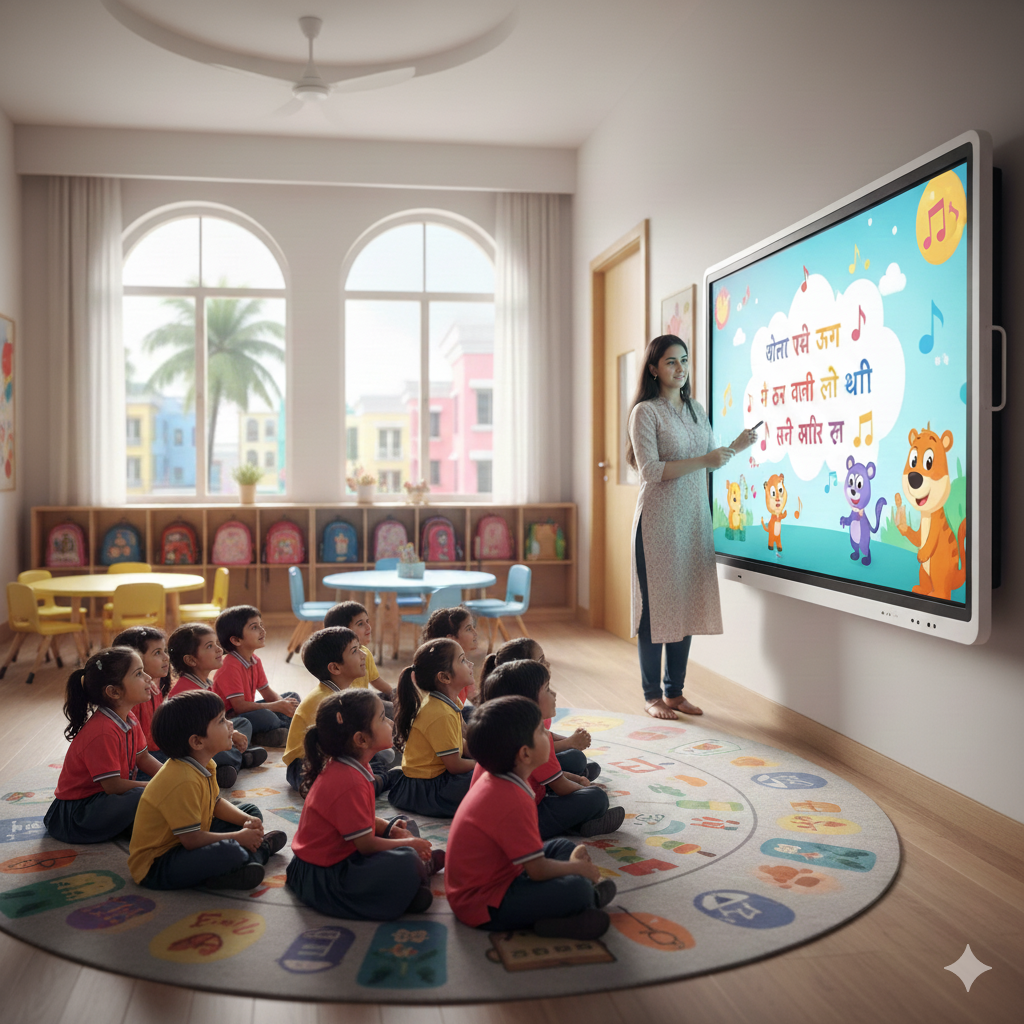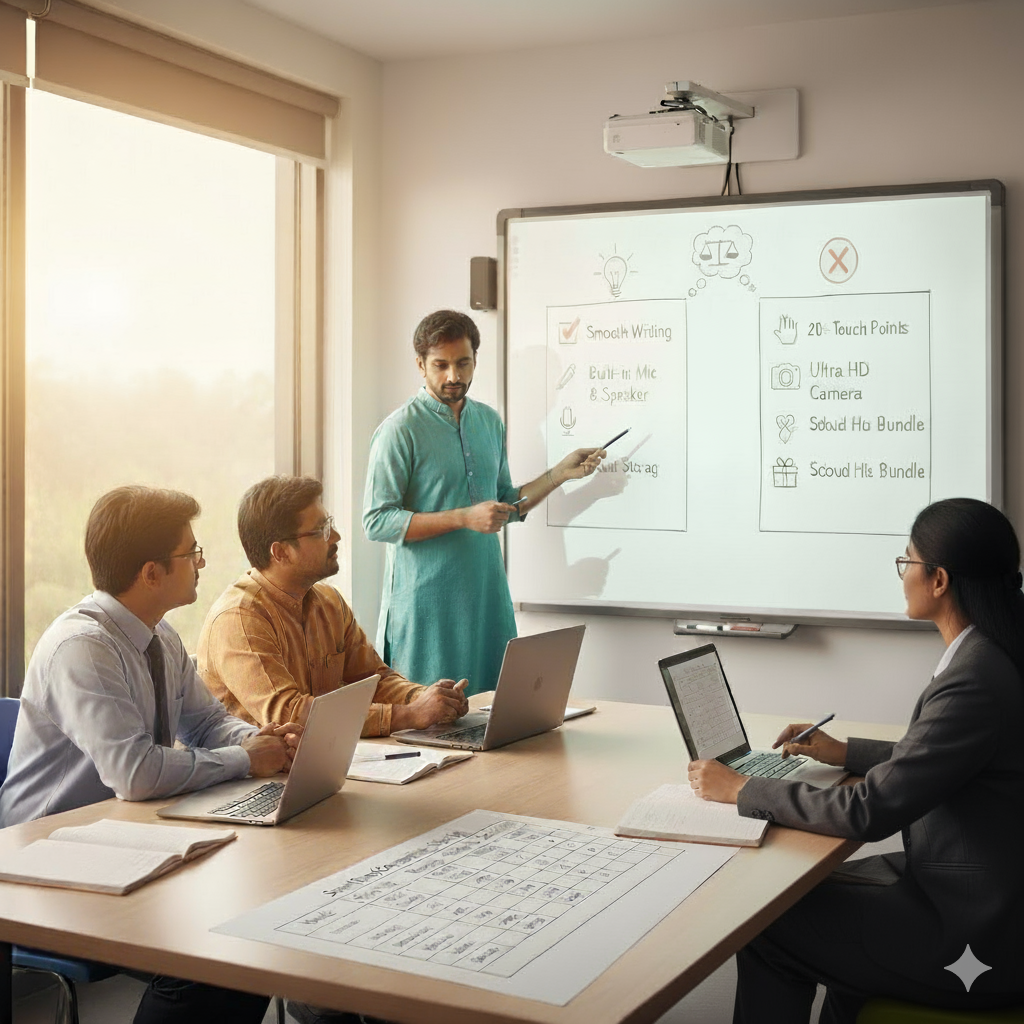Buying a Digital Board for Teaching? Avoid These 6 Mistakes That Hurt Classroom Performance

Digital boards for teaching have become a cornerstone of modern classrooms. From enhancing student engagement to enabling interactive lessons, they offer several advantages over traditional blackboards. But owning a digital board isn’t enough. How it’s used every day makes all the difference.
Many educators, despite good intentions, run into common usage errors that limit the board’s effectiveness. Whether you’ve already installed a digital board for teaching or are planning to buy one soon, knowing these mistakes, and how to avoid them, can save valuable teaching time and improve student outcomes.
Let’s explore six daily mistakes many educators make with interactive boards and simple ways to avoid them.
6 Mistakes to Avoid When Using Digital Board for Teaching
1. Skipping Software and Firmware Updates
This is one of the most overlooked issues. Most digital boards run on proprietary software that needs timely updates. These updates typically improve performance, fix known issues, and introduce new capabilities.
When ignored, teachers may encounter unresponsive tools, slow touch response, or compatibility issues with apps.
Avoid it by:
- Turning on automatic updates, if the option is available.
- Setting aside time once a week, ideally at the beginning, to review and update the system.
- Staying connected with your vendor’s support page or update notifications.
For example, some newer digital boards for teaching offer cloud sync, screen mirroring, and dual-teacher modes—all of which come via updates.
2. Using Incompatible Accessories
It’s tempting to plug in any available HDMI cable or generic stylus, especially in a busy school environment. But not all accessories are compatible across models or brands.
Wrong accessories can result in dropped connections, inconsistent writing input, or even screen lag, especially during live sessions.
Avoid it by:
- Using accessories recommended by your digital board provider.
- Keeping one set of extra styluses and certified cables in each classroom.
- Avoiding cheap third-party pens that can damage the touch layer.
If your board uses IR pen-based interaction, the pen’s angle, pressure, and design all matter more than you think.

3. Poor Cleaning Methods
Smart boards, like any high-touch display, gather fingerprints, dust, and smudges daily. However, many cleaning practices do more harm than good. Using abrasive cloths or chemical sprays can lead to screen discoloration and reduced touch sensitivity over time.
Avoid it by:
- Using a dry microfiber cloth, preferably the kind used for laptop screens.
- Avoiding ammonia-based cleaners or wet wipes.
- Cleaning the board once daily, especially if multiple teachers or students use it.
A well-maintained screen improves both visibility and responsiveness—two things directly tied to learning effectiveness.
4. Treating It Like a Passive Projector
Another common mistake is using the digital board for teaching as just a display screen. Playing videos or slides without any interaction turns a powerful teaching tool into a one-way medium.
Many boards today support live annotations, content layering, and on-screen collaboration—but those features often go untouched.
Avoid it by:
- Planning lessons that require students to come up and interact.
- Using built-in tools like split-screen writing, timers, and interactive boards.
- Enabling multiple users (especially in group activities or co-teaching sessions).
Educators who adopt a more hands-on approach often notice better retention and classroom participation.
5. Improper Connectivity Setup
Technical issues before or during class can be frustrating. Loose HDMI cables, wrong input selection, or incompatible screen mirroring apps disrupt the flow of a session.
In institutions where teachers switch classrooms, improper setup can easily become a daily challenge.
Avoid it by:
- Running a short pre-class tech check, especially after changing rooms or setups.
- Labelling HDMI/USB inputs and saving display settings, if supported.
- Familiarizing teachers with wireless casting options from laptops or tablets.
Digital boards for teaching are designed to integrate smoothly—but that only happens with routine setup hygiene.
6. Not Customising the Board for the Classroom
Each classroom differs in its setup, lighting, and overall environment. Using default settings across different spaces leads to poor visibility, bad audio projection, or inconvenient UI placement.
A classroom with bright windows, for instance, may require higher brightness or matte display settings to reduce glare. Touch calibration may also vary depending on the wall surface or projector angle.
Avoid it by:
- Adjusting display brightness and audio based on classroom size and light.
- Calibrating touch whenever the board is relocated.
- Saving multiple profiles for different subjects or teaching preferences.
Simple adjustments can go a long way in making the digital board for teaching feel more intuitive to students and teachers.
Bonus Tips to Get More Out of Your Digital Board for Teaching
- Use cloud storage: Save whiteboard content or class notes instantly for revision.
- Create student-led sessions: Let learners explain topics using the board—peer teaching boosts confidence.
- Schedule refresher sessions: A 15-minute internal session once a month can help your team discover unused features.
- Add a feedback loop: Ask students which board features they find most helpful. Often, their answers lead to better usage habits.
Final Thoughts
Investing in a digital board for teaching is a great first step toward future-ready classrooms. But the real value comes when it’s used effectively every day.
Avoiding small yet costly usage mistakes can help unlock the full potential of your interactive board—leading to better learning outcomes, smoother teaching sessions, and a higher return on investment.
Looking Beyond a Regular Digital Board for Teaching? Choose Smarter with Roombr
Roombr offers a holistic digital classroom solution which is unlike other digital boards for teaching. With an all-in-one setup, plug-and-play ease, minimal maintenance, and powerful features built for real classrooms, we’re redefining what teaching tech should be.
See why forward-thinking institutions choose Roombr for higher ROI and seamless daily use. Book your demo today.
Foziya Abuwala
Share
Step Into the future of
Education with Roombr

















